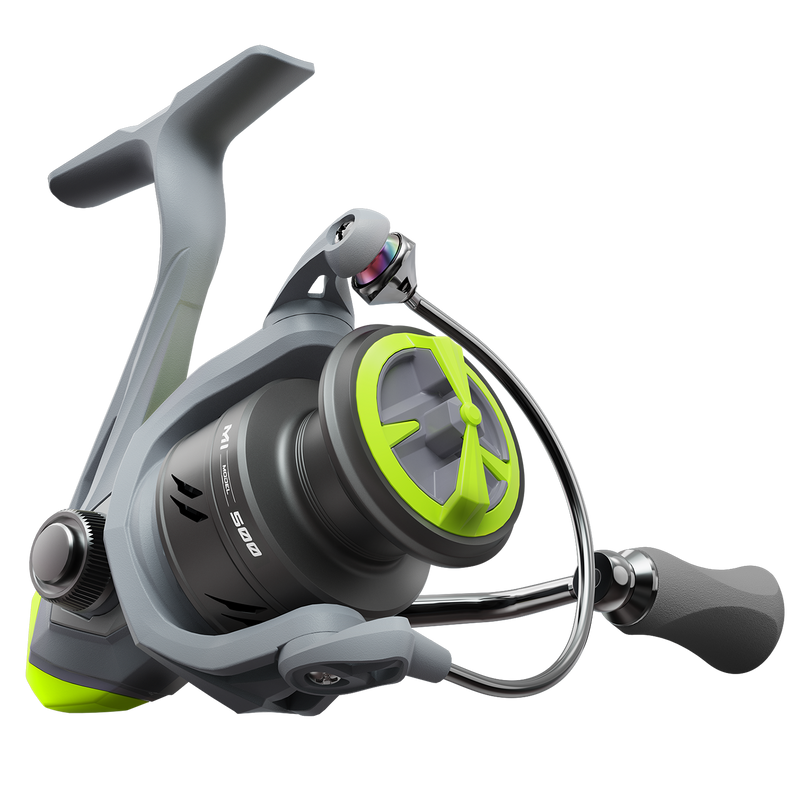Unlock the Secrets to Catching More Bass with the Perfect Spinning Reel!
Bass fishing is not just a hobby; it's a passion that brings together nature lovers and anglers alike. Picture yourself on a tranquil lake, early in the morning, the mist hovering over the water as you await that exhilarating moment when a bass strikes your line. However, the key to enhancing your fishing success and overall enjoyment lies in selecting the right spinning reel. This article aims to guide you through the essentials of spinning reels for bass fishing, from understanding their mechanics to choosing the right size and maintaining them for longevity. Whether you're a seasoned angler or a beginner, you'll find valuable insights to help you make an informed purchase that can elevate your fishing experience.

Understanding Spinning Reels
A spinning reel is a type of fishing reel that is mounted below the rod and is designed for ease of use and versatility, especially in bass fishing. Unlike baitcasting reels, spinning reels feature an open-faced design, which allows anglers to see the line and spool clearly, making it easier to manage. The mechanics behind a spinning reel include a bail that opens and closes to allow for line release and retrieval. When you cast, the bail opens, allowing the line to flow freely. As you retrieve, the bail closes, allowing the line to be wound onto the spool. This design is particularly effective for lighter lures and finesse techniques, which are crucial when targeting bass that may be more finicky. Having used spinning reels for years, I can attest to their reliability and ease of use, especially when the bass are biting lightly.
Key Features to Look for in a Spinning Reel for Bass Fishing
When selecting a spinning reel for bass fishing, several key features come into play. First, consider the gear ratio; a higher gear ratio allows for quicker line retrieval, which is particularly useful when a bass strikes. A gear ratio of 6:1 is generally a good starting point for bass fishing. Next, the drag system is crucial; a smooth drag can mean the difference between landing that trophy bass and losing it. Look for a reel with a reliable drag system that can handle the weight of the bass you're targeting. Line capacity is another important feature; ensure that the reel can accommodate the type and weight of line you plan to use, especially if you're fishing in areas with heavy cover. Lastly, weight matters. A lighter reel will help reduce fatigue during long fishing trips, allowing for longer casting and better control. I remember a trip with my friend, where switching to a lighter reel made all the difference as we battled against the bass for hours without wearing ourselves out.
Choosing the Right Spinning Reel Size
Determining the right size of spinning reel for bass fishing can significantly influence your success. Factors to consider include your fishing technique, the size of the bass you aim to catch, and the fishing environment. Generally, a medium-sized spinning reel (3000-4000 series) is versatile enough for most bass fishing scenarios. If you plan on targeting larger bass in heavy cover, consider a larger reel that can handle heavier line and drag settings. Conversely, if you're fishing in open water with lighter lures, a smaller reel may suffice. It's also essential to match the reel size with your rod; a balanced setup will improve your casting accuracy and comfort. I vividly recall using a smaller reel on a day when we were targeting smaller species, only to switch to a larger one when the big bass started feeding. The change made it easier to reel in those hefty catches!
Maintenance Tips for Your Spinning Reel
Proper maintenance of your spinning reel is key to ensuring its longevity and optimal performance. After each fishing trip, it's advisable to clean your reel thoroughly. Use fresh water to rinse off any salt or dirt, especially if fishing in brackish or saltwater environments. Pay particular attention to the spool and drag system. After cleaning, lubricate the moving parts with a suitable reel oil to prevent rust and ensure smooth operation. Additionally, store your reel in a cool, dry place to avoid damage from humidity and heat. It's also wise to periodically inspect your line for wear and replace it as needed to avoid breakage during a catch. A friend of mine learned this the hard way when he neglected to maintain his reel, resulting in a lost trophy bass due to a frayed line. Regular upkeep can save you from such heartaches!
Summarizing Key Points for Choosing the Right Spinning Reel
In summary, selecting the right spinning reel for bass fishing is fundamental to enhancing your fishing experience. By understanding the mechanics of spinning reels, identifying key features, choosing the appropriate size, and maintaining your equipment, you position yourself for success on the water. Remember to consider your specific needs and preferences as you make your purchase, ensuring that your spinning reel complements your fishing style. With the right gear in hand, you're ready to unlock the secrets to catching more bass and enjoying every moment spent in nature.







